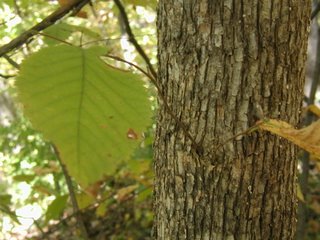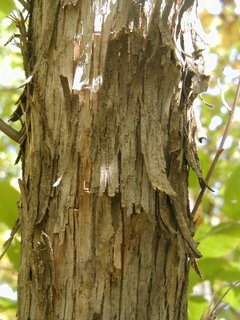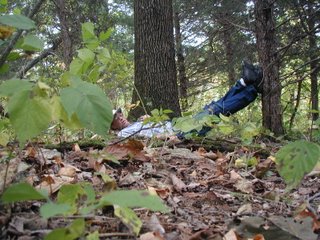


Here is a photo of Shingle oak leader bud. Notice that they are grouped at the tip. This is typical of oaks.
Here are some photos of White Ash. Notice the year end color change.






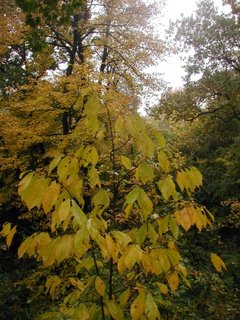




Now the orange is off the sky and its blue gray. Clouds are in the western ½ of the sky.
A couple of fish splash in the water 3 or 4 birds chip, chip can be heard. A cow moos twice.
10 geese honk as they come in and splash land 100 yards in front of me.
The Great blue heron continues to watch from his perch on the dead tree. The turkey vulture continues to ruffle his feathers behind me.
A lot of fish are hitting the water now. It is getting hard to see to write.
The bat is still working the sky at about 20'.
The heron stretches his neck out and makes 4 deep guttural calls.
The night bugs are sounding in force. I can't see the lines on my paper. So I head back to my camp.
Wednesday morning 4 October Watkins Mill MO state park
7 small ducks on water. I can't see any ID marks. The gull I have been seeing has black wing tips. So it puts it to the ring billed gull or the herring gull.
I saw another Turkey vulture convention. They gather in the early morning and fly around in a mob for a short time then disperse to their areas.
I think of Colossians 1 in the Bible. It talks about all power if that wasn't enough it is according to God's glorious might. Which is unlimited. God has promised us so much. We need to acquire it by the prayer of faith. Just as there is so much to learn of nature and enjoy. God has so much for us. Go to Him, He wishes to lavish on us abundant life.
Honey locust leaves are 80% down. Last week it was just a few vines and sumac that had changed colors. Now there is a lot of color. What a difference a week makes. The Paw paws are bright yellow. They are a great tree for color. Honey locust leaves are raining down as I write.
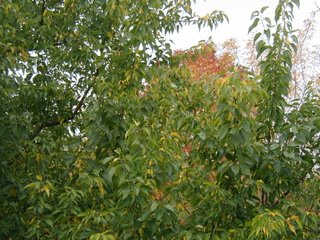
Photo of Osage orange striking yellow green combination with an orange tree in the background. The background tree is a Pignut hickory. End buds less than 1/2” tight bark 5-7 leaflets. It is the best fall color tree I have seen today.
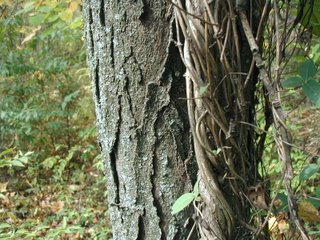 Honey Locust Gleditsia triacanthos alway seems to have vines growing up the trunk.
Honey Locust Gleditsia triacanthos alway seems to have vines growing up the trunk.
